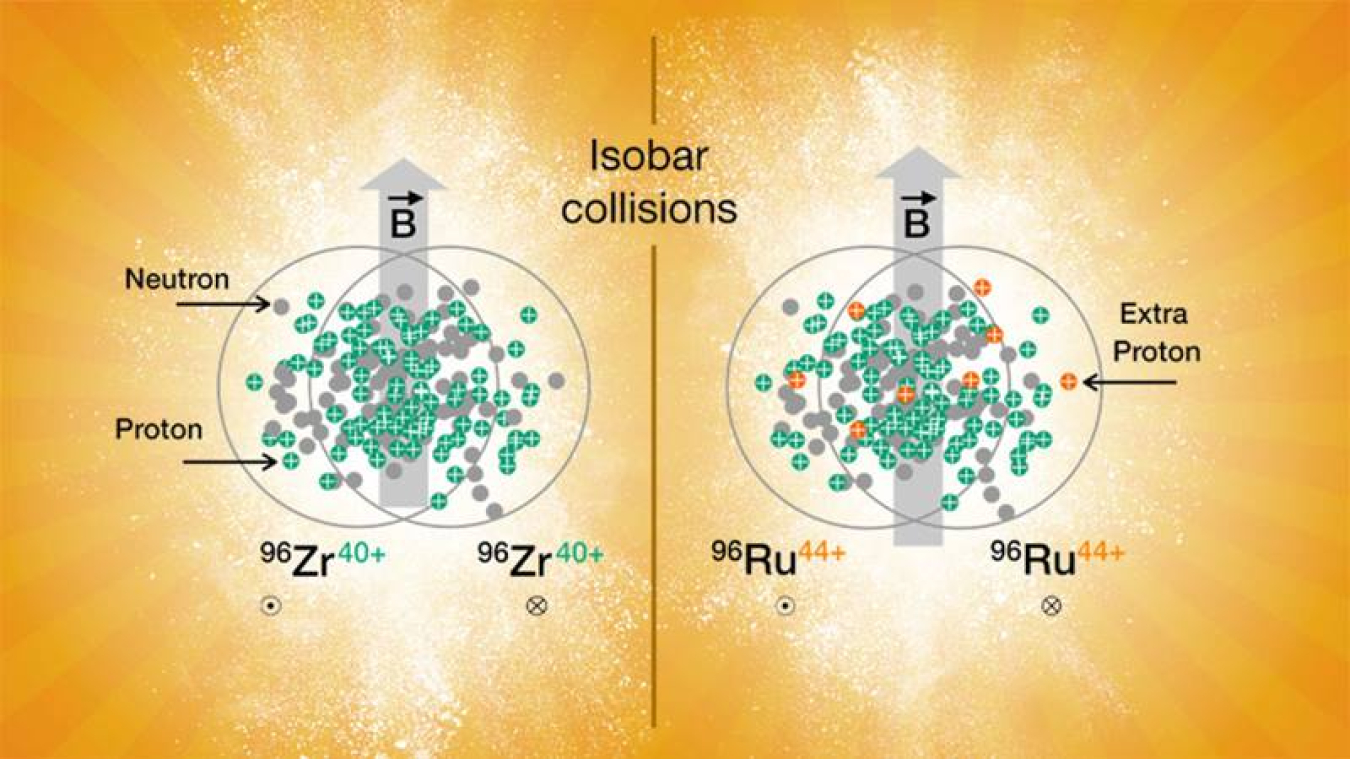
The Science
Isobars are two different elements that have the same total number of nucleons (protons and neutrons) but a different mix of these particles. When these nuclei are stripped of their electrons and turned into ions, the isobar with more protons will have more positive charge and should produce stronger magnetic fields when the ions collide. Scientists expected the stronger magnetic field created in collisions of ruthenium-96 ions to produce a greater separation of charged particles than collisions of zirconium-96 ions which, with four fewer protons, produce weaker magnetic fields. But the results showed the opposite effect—slightly more charge separation in zirconium collisions. This suggests that there may be more differences between these two “isobar” nuclei than just their proton numbers. The precision measurements will give scientists new insight into subtle differences in nuclear structure.
The Impact
This experiment was designed to look for separation of charged particles as evidence that there’s an imbalance in the numbers of certain particles created when ions collide at the Relativistic Heavy Ion Collider (RHIC). Such an imbalance is known as a “broken symmetry.” A stronger magnetic field should make the charge separation effect stronger if all other things are equal. The findings imply that previously unknown subtle differences in the shapes of the isobars or the distribution of protons and neutrons within them could obscure the expected signal. The precision measurements will help physicists refine their descriptions of these particles and ways to examine other RHIC data.
Summary
Early data from RHIC, a Department of Energy (DOE) scientific user facility, showed signs of charge separation that hinted there might be small scale imbalances, or asymmetries, within the hot plasma created when ions collide. The idea is that the interaction of these “bubbles” of “broken symmetry” with the magnetic field generated by the colliding ions could lead to separation of positive charges from negative ones. If that’s the case, the charge separation should get stronger with a stronger magnetic field. Scientists used RHIC’s STAR detector to make precision measurements of particles emerging from two sets of isobar collisions—assuming the only change was the magnetic field strength—to test this idea. STAR scientists conducted five separate analyses following “double-blind” study methods so the outcome would not be biased by their expectations. While the results did not reveal the expected effect, as defined prior to the analyses, those results have led experimentalists and theorists to take a closer look at the colliding ions. Researchers have realized that heavy ion collisions, with precision particle detection, can be a new tool for studying nuclear structure. Meanwhile, the search for broken symmetries will continue as theorists refine their predictions and experimental physicists analyze additional data from RHIC.
Contact
James Dunlop
Brookhaven National Laboratory
[email protected]
Funding
Brookhaven Lab’s role in this research and operations at RHIC is supported by funding from the DOE Office of Science.
Publications
Abdallah, M. S., et al., (STAR Collaboration), Search for the chiral magnetic effect with isobar collisions at √sNN=200 GeV by the STAR Collaboration at the BNL Relativistic Heavy Ion Collider. Physical Review C 105, 014901 (2022). [DOI: 10.1103/PhysRevC.105.014901]
Related Links
Results from Search for ‘Chiral Magnetic Effect’ at RHIC, Brookhaven National Laboratory press release
Scraped from https://www.sourcearu.com




